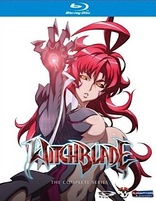Witchblade: Complete Series Blu-ray Movie
HomeWitchblade: Complete Series Blu-ray Movie 
FUNimation Entertainment | 2006 | 600 min | Rated TV-MA | Nov 03, 2009Movie rating
7.6 | / 10 |
Blu-ray rating
| Users | 4.3 | |
| Reviewer | 3.5 | |
| Overall | 3.7 |
Overview
Witchblade: Complete Series (2006)
In 22nd-Century Japan, Masane Amaha, one of the surviving catastrophe that destroyed Tokyo becomes the latest in an ancient line of women-only warriors to wield the mysterious sentient weapon known only throughout history as "the Witchblade". Protecting her little girl, she will face her worst fear ...
Starring: Mamiko Noto, Akemi Kanda, Mika Itou, Shôto Kashii, Rikiya Koyama| Anime | Uncertain |
| Foreign | Uncertain |
| Action | Uncertain |
| Comic book | Uncertain |
| Sci-Fi | Uncertain |
| Erotic | Uncertain |
| Adventure | Uncertain |
| Supernatural | Uncertain |
| Comedy | Uncertain |
| Thriller | Uncertain |
Specifications
Video
Video codec: MPEG-4 AVC
Video resolution: 1080p (upconverted)
Aspect ratio: 1.78:1
Original aspect ratio: 1.78:1
Audio
English: Dolby TrueHD 5.1 (48kHz, 16-bit)
Japanese: Dolby Digital 2.0
Subtitles
English
Discs
50GB Blu-ray Disc
Three-disc set (3 BDs)
Playback
Region A (locked)
Review
Rating summary
| Movie | 4.0 | |
| Video | 3.5 | |
| Audio | 3.0 | |
| Extras | 4.0 | |
| Overall | 3.5 |
Witchblade: Complete Series Blu-ray Movie Review
Containing a surprising mixture of elements, Witchblade surpassed my expectations.
Reviewed by Dustin Somner November 18, 2009The history of the Witchblade franchise dates back to 1992, when seven prominent comic book illustrators left DC Comics and Marvel to form a new umbrella corporation named Image. Each illustrator formed their own studio, allowing them the freedom to individually pursue new comic book enterprises (a possibility they never had while working on the time-tested franchises of Marvel and DC). One of the illustrators was Marc Silvestri (well-known for his illustrations of “Wolverine”), who formed Top Cow Production. Together with some fresh faces in the comic book industry, Silvestri created the 1995 release of “Witchblade Vol. 1”, cementing his status as a legitimate new player in the industry. At present, the “Witchblade” comic series has seen 132 issues released, but the creative team behind the “Witchblade” universe wasn’t content to sit on the title as a comic book franchise. After a short-lived two season stint as a cable television series (2001-2002), Top Cow struck a deal with Gonzo anime studio, allowing them the opportunity to adapt the Witchblade story into 24-episode anime series. Originally airing on Japanese television during 2006, American audiences had to wait nearly two years for the final episodes to finally make their way to the DVD format. For those of us who waited until now, there’s never been a better time to hunker down and plow through all 24 episodes.

The Witchblade in action.
Following a tragic earthquake that destroyed part of Tokyo, Masane Amaha was afflicted with an extreme bout of amnesia. In the aftermath of the destruction, she was found with a young girl named Rihoko, and a strange marking on her wrist. Flash forward six years, and we find Masane and Rihoko returning to Tokyo to start a new life as mother and daughter. Their hopes are soon dashed, when Masane is declared unfit to care for Rihoko by child welfare workers, and thrown in jail when she doesn’t comply with their removal of Rihoko. While in jail, Masane is attacked by a monsterous creature, and the marking on her wrist is revealed as the Witchblade, an ancient source of destructive power that chooses subsequent bearers in each generation. After transforming into an unstoppable weapon with an unrelenting desire for battle, Masane finds herself in the middle of a power struggle between two opposing organizations that seek the power of the Witchblade. Masane reluctantly goes to work for Reiji Takayama, the Bureau Chief of Douji Industries, in exchange for his protection against anyone who might try to separate her from Rihoko. Meanwhile, Tatsuoki Furumizu, the leader of a government agency researching genetic manipulation to create the ultimate female soldiers, has perfected the creation of Cloneblade amulets, that hold similar power to the Witchblade, yet seem inferior in their responsiveness during battle. Bearers of the Cloneblades are known as Neogenes, or a group of genetically altered women with heightened fighting abilities. These Neogenes are being hunted by the Douji group’s failed weapons experiment (Ex-Cons), which produced insane fighting machines that seek out the energy of either the Witchblade or Cloneblades. Masane agrees to track down the Ex-Cons during her employment with the Douji Group, which catches the eye of Furumizu, who begins his own effort to possess the power of the Witchblade. Splitting her time between hunting Ex-Cons, escaping Neogenes, and caring for her young daughter are all in a day’s work for Masane.
I admittedly approached this series with a bit of skepticism. Having never watched an episode prior to sitting down for this Blu-ray release, I mistakenly fell for the common phrase, “don’t judge a book by its cover”. After all, looking at the graphics on the cover of the set, you’d assume Witchblade is a cross between highly-stylized action and animation meant to show off the finer assets of the female anatomy. At first, my assumptions led to a bit of disappointment, since the first episode is surprisingly void of those elements. Combining heavy dialogue with a lack of action, I began to feel as if I was watching an animated special on the Lifetime channel, about a woman’s struggle to keep her daughter in a society that frowns on single parents. Thankfully, the closing minute of the episode kicked things into gear, presenting the protagonist as depicted on the cover. From that point forward, the series blends an enticing mixture of rousing battles, heartfelt emotion, and a gradual series of revelations that kept this viewer coming back for more.
If there’s one thing that makes Witchblade so successful, it’s the show’s ability to cater to a wide audience. I’ve always been an action fan when it comes to anime, but what surprised me about Witchblade, is the focus on the lighter elements in the series. At the core of the 600-minute runtime is the relationship between Masane and Rihoko, with the Witchblade often taking a back-seat. The story naturally revolves around the history of the Witchblade, and the power struggle over the power Masane holds, but Masane consistently views the weapon as more of a burden than anything. Given the chance, she’d much rather give up the fight and simply return to a calm life with her daughter. The tragedy of the story revolves around her inability to go back to a normal life, and several late-series revelations regarding the downside of wielding the power. Without the relationship between mother and daughter, the series would not have been nearly as memorable.
Despite my overall enjoyment of the series, I admittedly grew slightly bored through several episodes. During the first half of the series, there’s far too much focus on the Ex-Cons, and Masane’s pursuit of them. During that portion of the show, it plays out more like a serial killer/detective story, with little opportunity for Masane to don the Witchblade armor. Once the Neogenes enter the picture and play a more prominent role in the series, the show digs back into the deep plot regarding the Neogenes “father”, offering us a glimpse of the battles yet to come. I’d hate to complain about the structure of the series, since I appreciate the fact that the creators keep the focus of each episode on a linear storyline (a source of disappointment in other anime series such as Devil May Cry), but I came away with the impression that the show had 18 episodes of material that they attempted to spread over 24.
The animation quality of Witchblade never felt disappointing, but registers a notch below several other anime productions of the same time period. Perhaps Gonzo was working with a tight budget in the completion of the 24-episode series, forcing the animators to spend less time on intricate layering in the animation, but whatever the reasoning, some viewers with larger displays might be left wanting more.
Witchblade: Complete Series Blu-ray Movie, Video Quality 
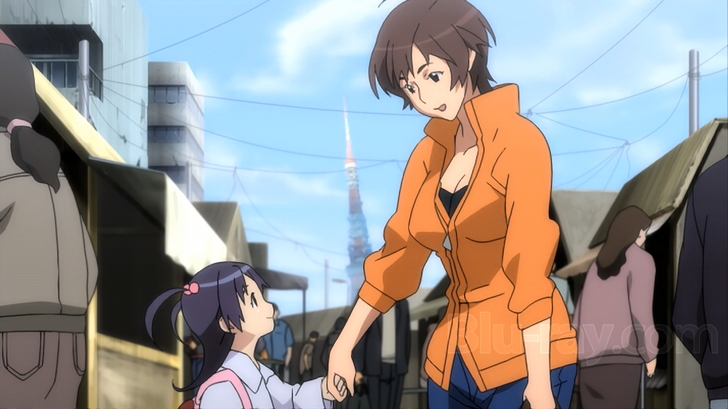
Presented in 1080p utilizing the AVC codec (at an average bitrate of 16Mbps), Witchblade offers another impressive high-definition transfer courtesy of Funimation. Anyone accustomed to the animation quality on anime television productions will have a general idea of the budgetary limitations the artists work under, so the jump to 1080p doesn't offer an extensive upgrade (especially when compared to a theatrical release such as Sword of the Stranger). Despite the limitations of the source material, lines remain crisp, backgrounds display reasonable texturing, and character movements rarely demonstrate a lack of fluidity. The coloring of the series is one of the highlights in the animation, since the artists did a wonderful job designing the body armor (or lack thereof) for Masane and the Neogenes. Each outfit is unique in style and color, matching the personality of warrior that wears the Cloneblade/Witchblade. The precision in the coloring, coupled with beautiful backdrops for the fight sequences is a perfect recipe for eye candy. Equally important in a production of this sort, is the depth of black levels and accuracy of contrast. The majority of the battle scenes take place at night, so I'm pleased to report the video engineers at Funimation hit a home run with this release. Blacks are inky deep and contrast offers stunning differentiation between the bright armor of the Neogenes, and the darkness of the nighttime sky.
Alas, all is not 100% perfect on the visual quality of this release. I detected some slight banding when there were subtle shade transitions in the image, several scenes contain lines that struggle to maintain their position from frame to frame (which could be the fault of the animation and not the transfer), and those watching the feature on a very large display will notice some stair-stepping along diagonal lines. If you'd like an example of the stair-stepping and wavering line structure, pop in the third disc and go to the 1:04:33 mark. If you look at the door in the background, you'll notice a vertical line along the right side that jumps from left to right when it should remain consistent. Now look down to the pant leg of Takayama, and you'll notice the stair-stepping I was referring to.
Despite some minor concerns (that likely won't be noticeable to most viewers will less than a 60 inch display), Witchblade offers a highly competent visual experience that should please fans for years to come.
Witchblade: Complete Series Blu-ray Movie, Audio Quality 
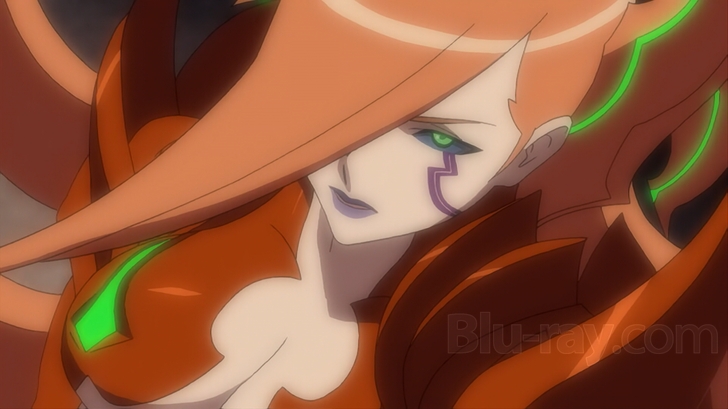
Continuing with their recent trend of giving the native language track the short end of the stick, Funimation has provided a TrueHD 5.1 track dubbed in English, and a mere Dolby Digital 2.0 track in the original language of Japanese. As always, I prefer the native language on any foreign produced series, so I was clearly disappointed in the diminished quality of the Dolby Digital 2.0 track. The front-heavy mix lacks the depth that comes from surround separation, leaving us with an experience that's merely adequate at getting the job done, but not what I'd consider a value-added audio experience. The English dub on the other hand, demonstrates a more robust feel, separating nuances in the audio effects to create an immersive experience. As mentioned earlier in the review, Witchblade isn't the action-heavy series we'd expect it to be, but when the battles do take place, the lossless audio track kicks into gear. From the high-pitched wail of blades touching, to the explosive lows of the LFE track, the mix rarely passes up the opportunity to "wow" viewers. I was equally impressed by the clarity in the musical score, which varies between light and bubbly selections during the comedic portions of the series, and loud, oppressive arrangements that ratchet up the tension. Dialogue is crisp and clear on both the Japanese and English mix, eliminating the need to adjust volume levels between the varying intensity of each scene.
If I had the option of scoring the audio offerings separately, I'd give the English track a 4/5, and the Japanese track a 2.5/5. The differences between the two tracks are certainly noticeable, but the lack of surround separation on the Japanese mix didn't detract from my enjoyment of the show.
Witchblade: Complete Series Blu-ray Movie, Special Features and Extras 
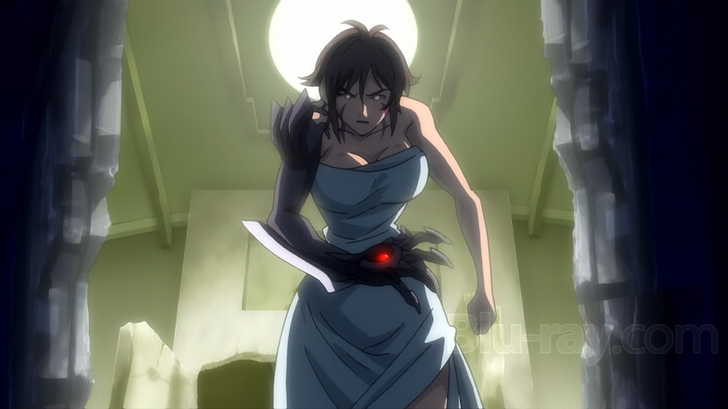
Cast Interviews (480p, Dolby Digital 2.0): Containing individually selectable interview segments with eight of the primary Japanese voice actors, this supplement is mainly dedicated to a discussion of themes from the series, character motivations, and the way each actor attempted to personify the intricate attributes of their character. Each interview varies in length, but the average runtime falls around eight minutes.
The Witchblade Forged (480p, Dolby Digital 2.0, 54:04 min): Split into three separate sections, this featurette consists of interviews with the creators of the "Witchblade" comic book franchise, as they discuss the freedom of creating the series outside the underpinnings of the dominant studio system, and every aspect of the creative process. In between the various interviews, we're shown clips from the pages of the comic (which look amazing). In the third section of the featurette, the artists and creators delve into the transformation of the "Witchblade" comic as an anime production. If you're a comic book fan, or simply interested in the origins of the Witchblade character (prior to the different adaptation of the anime series), this is a must-see supplement.
Tour of Top Cow (480p, Dolby Digital 2.0, 14:01 min): Studio owner Marc Silvestri gives viewers a candid behind-the-scenes tour of Top Cow, and introduces most of the staff members working for the company.
How to Create a Comic Book the Top Cow Way (480p, Dolby Digital 2.0, 17:11 min): Consisting of interviews with various staff members, this supplement provides a play-by-play description of the creation of a comic book franchise. If you have any interest in the amount of work required to complete a comic book, you're in for a real treat.
Top Cow Studio Tour Outtakes (480p, Dolby Digital 2.0, 7:52 min): as the title implies, this extra includes some of the more hilarious moments from Marc Silvestri's tour (that didn't make it into the prior featurette).
Coloring a Comic Book Page (480p, Dolby Digital 2.0, 4:33 min): Sitting at his computer, Blond (a Top Cow artist) demonstrates how he adds color shading in the digital frames of a comic.
The Early Days of Image Comics (480p, Dolby Digital 2.0, 3:33 min): Marc Silvestri fondly reflects on the heyday of Image, when the popularity of comic books exploded. At that time, the studio owners had plenty of money to spend on unique big kid toys.
The Top Cow Staff Talks about Comics (480p, Dolby Digital 2.0, 6:42 min): multiple topics are discussed, but the one I enjoyed the most is Silvestri's discussion of what would happen if you tried to design a subplot around bankrupting Bruce Wayne.
Experiences in Japan (480p, Dolby Digital 2.0, 7:24 min): Top Cow president Matt Hawkins touches on his experience visiting Gonzo studio in Japan, and how positive the Witchblade collaboration turned out. At the end of the supplement, Silvestri discusses his efforts to expand two of his franchises into alternate forms of media.
Crossing into Other Media (480p, Dolby Digital 2.0, 6:33 min): Closing out the Top Cow portion of the special features, the Witchblade creators discuss where the franchise is headed currently and where they hope it goes in the upcoming years.
Rounding out the extras, we have a collection of textless songs from the series, three Japanese TV spots (standard definition), a promotional video marketing Witchblade (standard definition), and a collection of trailers for other Funimation releases.
Witchblade: Complete Series Blu-ray Movie, Overall Score and Recommendation 
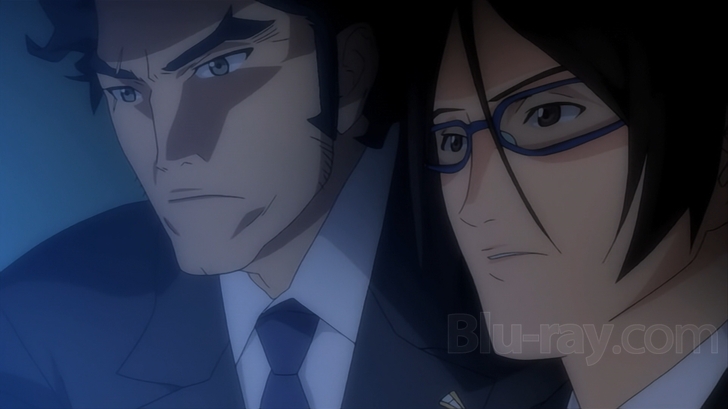
Although Witchblade wasn't what I expected, I found enough to like in the 600-minute runtime to offer a whole-hearted recommendation to anime enthusiasts. The mixture of elements throughout the series elevates the production above a simple action-fest with well-endowed women, to deliver a deep plot and emotional weight not usually found in this type of series. That's not to say the market audience will be disappointed (after all, the core elements are still in place), but the series would lack lasting value and stand as an otherwise forgettable experience if you remove the incorporation of adequate character-building. If you've been up in the air about adding Witchblade to your growing collection of anime, put your fears to rest and grab a copy. I doubt you'll be disappointed.
Other editions
Witchblade: Other Seasons
Similar titles
Similar titles you might also like

Burst Angel: The Complete Series
Essentials
2004

Rin Daughters of Mnemosyne: Complete Series
2008

Heroic Age: The Complete Series
2007

Claymore: The Complete Series
Kureimoa / クレイモア
2007

Full Metal Panic!: The Complete Series
Anime Classics / フルメタル·パニック!
2002

Gunslinger Girl: Season One
2003-2004

Basilisk: The Complete Series
Classics
2005

Soul Eater: The Complete Series
ソウルイーター
2008-2009

Needless: Complete Collection
2009

High School of the Dead: Complete Collection
2010-2011

Trinity Blood: The Complete Series
Classics
2005

Samurai 7: The Complete Series
Classics
2004

Full Metal Panic!: The Second Raid - Complete Series
Anime Classics
2005

Full Metal Panic? Fumoffu: The Complete Series
Classics
2003

Fullmetal Alchemist Brotherhood: Box Set 2
鋼の錬金術師 FULLMETAL ALCHEMIST
2009-2010

Vexille
Special Edition | Bekushiru 2077 Nihon sakoku
2007

Evangelion: 1.11 You Are (Not) Alone
Evangerion shin gekijôban: Jo
2007

Fullmetal Alchemist the Movie: Conqueror of Shamballa
2005

Samurai Girls: Complete Collection
2010

Samurai Champloo: The Complete Series
Classics / サムライチャンプルー
2004-2005
